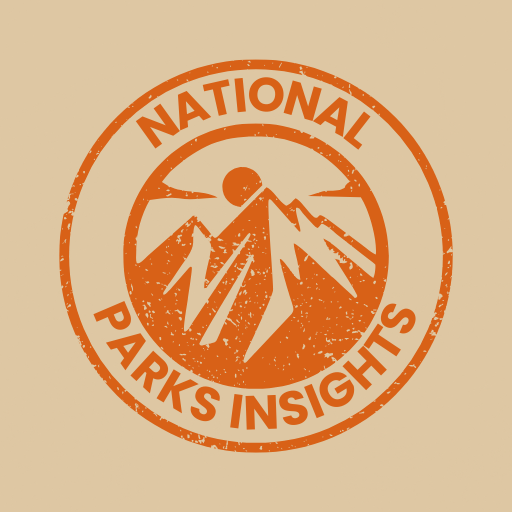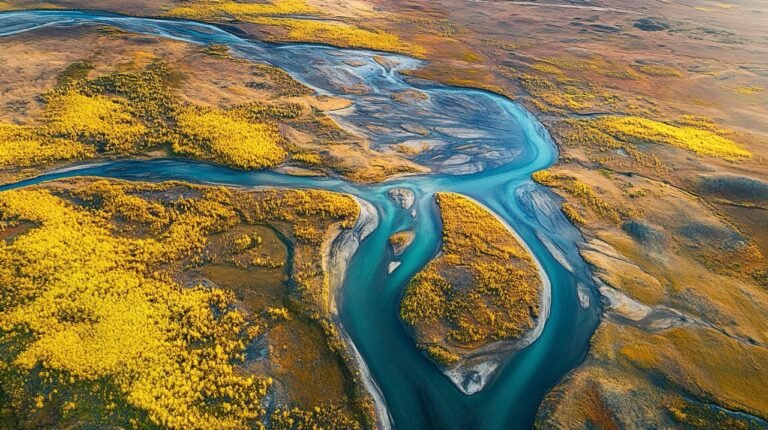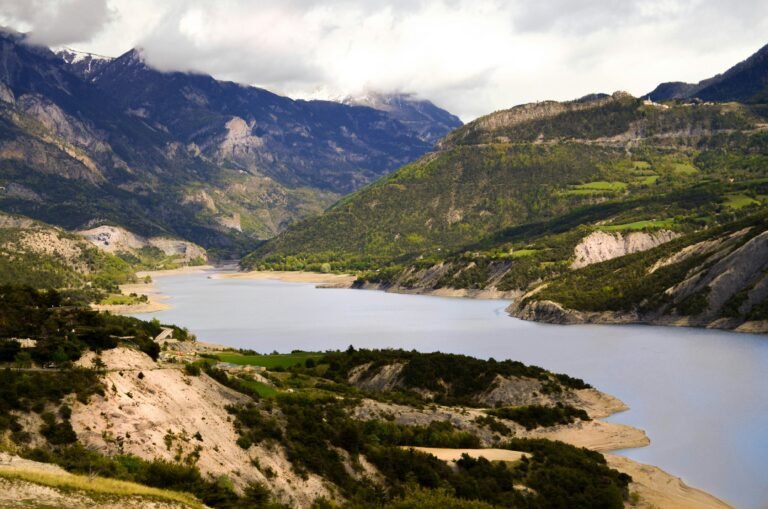Exploring Kobuk Valley National Park
Dive into the wild heart of Kobuk Valley National Park, a tucked-away slice of paradise that calls the brave and the curious.
Remote Wilderness Experience
Venturing into Kobuk Valley National Park is like stepping into another world—no roads, no trails, not even a hint of campgrounds in sight (Wikipedia). Brush up on wilderness survival skills, especially if you’re bold enough to brave the winter chill. This place is about as wild as it gets and offers a rare chance for solitude seekers to find themselves surrounded by nothing but nature’s melody.
To get to this untouched gem, visitors typically hop on air taxis from places like Nome, Bettles, or Kotzebue (Wikipedia). The lack of roads means Kobuk Valley sees fewer tourists than almost any other National Park in America—perfect for those who don’t mind a little inconvenience for a lot of adventure.
Services for Visitors
Although the park itself doesn’t cater to your average tourist comforts, nearby businesses have your back with options like air taxis, guided rafting, and hunting trips (NPS). It’s smart to reach out to these folks early to map out your great escape.
Before heading into the wild, drop by the Northwest Arctic Heritage Center in Kotzebue, your go-to for park info (Horizon Guides). About 80 miles southwest of the park, this center dishes out bear-safe containers and those treasured National Parks passport stamps. They’ll hook you up with everything you need to know to keep your trip both fun and safe. For extra tips, check out visitor information here.
Significance of Kobuk River
Right down the middle of the park flows the mighty Kobuk River. This waterway has carved the landscape and feeds the critters and plants that call it home. It serves not just as a lifeline but as a playground for both wildlife and explorers alike. Fishing, rafting, or simply soaking in the views—there’s always something happening around the river.
| Feature | Details |
|---|---|
| Length | 180 miles |
| Main Activities | Fishing, Rafting, Wildlife Spotting |
To get a glimpse of who you’ll meet along the way, learn about the wildlife in Kobuk Valley. Or, make tracks over to the mighty Kobuk sand dunes for a different slice of natural wonder.
Embarking on an adventure to Kobuk Valley Alaska is like signing up for a thrill ride where rough and wild meet serene and silent. Get out there and let the vast skies and crisp air etch stories onto your soul that you’ll carry forever.
The Great Kobuk Sand Dunes
Iconic Natural Feature
Smack dab in the heart of Kobuk Valley National Park, the Great Kobuk Sand Dunes pop up like a grand surprise amid the tundra and trees (National Park Service). Covering a jaw-dropping 25 square miles, these dunes offer a scene that’s both mind-blowing and weirdly mesmerizing. Imagine trudging across golden sands right next to lush, green landscapes – it’s a contrast that gives you a serious, “Wow, is this Earth?” moment. You really ought to check it out when trekking through Kobuk Valley.
Along with the Little Kobuk Sand Dunes and Hunt River Dunes, they make up the biggest moving pile of Arctic sand on this side of the planet (Wikipedia). If you think that’s otherworldly, NASA’s even poked around, comparing these dunes to Martian ones. We aren’t in Kansas anymore!
Formation and Characteristics
Getting a handle on how these dunes came about adds some cool trivia to your trip. They’re basically a leftover party gift from the last Ice Age. When the big old glaciers melted away, they left behind tons of powdered sand. Over thousands of years, wind and water teamed up to pile that sand into the impressive mounds you see today (Horizon Guides).
Check out these dune facts:
| Feature | What’s Cool About It |
|---|---|
| Area Covered | 25 square miles |
| Maximum Height | Up to 100 ft (30 m) |
| Formation Period | Shaped post-Ice Age, thanks to wind and water shenanigans |
| Geological Significance | Top active Arctic dune playground in North America, compared to Martian dunes by geeks. |
Reaching up to 100 feet tall, the dunes give you spectacular views of the nearby valleys, rivers, and woods. It’s like stepping into nature’s time machine, where stories from ancient times lay hidden beneath the sands.
So, as you gear up for your Kobuk adventure, penciling in the Great Kobuk Sand Dunes is a must-do. Take a peek at our kobuk valley weather report, so the skies are clear and the sand isn’t flying in your face. And for all the juicy details about the park, swing by our section on kobuk valley visitor info.
For more jaw-dropping sights and natural goodness in the park, drop by our page on unique geographic quirks. Time to channel your inner explorer and let the Great Kobuk Sand Dunes blow your mind.
Wildlife in the Park
Kobuk Valley National Park is a paradise for wildlife lovers. If critters and creatures get your heart racing, then understanding the range of animals here, especially the crazy caribou trip, is worth your time.
Mammals of Kobuk Valley
This park’s got a wild bunch. You’ll see the shaggy muskox and the towering moose eyeballing you from near the water. And yes, they’ve even got the bears – black and grizzly – doing their berry-picking rounds when summer hits. Keep your eyes peeled for those sneaky grey wolves prowling about:
- Muskox: Imagine a woolly mammoth’s cousin grazing the tundra.
- Moose: These guys are the kings of the deer family and usually hang near water.
- Bears: Grizzlies and black ones, sharing berry bushes – catch them in action.
- Grey Wolves: The park’s resident mystery, leaving paw prints and curiosity.
- Dall Sheep: High up, wearing their white fleece coats, adjusting to the rocks like little mountain ninjas.
Check out our page for more wildlife tidbits at wildlife in kobuk valley.
Western Arctic Caribou Herd Migration
The caribou migration is like nature’s own rock concert in Kobuk Valley. The herd’s road trip is about 600 miles long, a true epic journey from their summer lounging on the Brooks Range’s north slopes to their cozy winter digs down south.
- Journey: It’s basically the caribou’s way to find the best grub and love.
- Numbers: You’re looking at nearly half a million strong, quite the herd, making it one of the most massive land wanderings on the globe.
- Timing: Catch them twice a year: north-bound in spring, and south-bound come fall (NPS – Mammals).
| Yearly Migration Historical Data |
| — | — |
| Migration Length | 600 miles |
| Caribou Count | 450,000 – 500,000 |
| Frequency | 2 times per year |
Watching this journey can give you a deep respect for the earth’s wonders. It’s vital for the caribou’s life cycle and a cultural cornerstone for local Indigenous folks. More tales await at kobuk valley caribou migration.
Get out there, let your wild side roam, and soak up Kobuk Valley National Park’s jaw-dropping animal kingdom. For some planning tips, head over to visiting kobuk valley.
Cultural Heritage
Exploring Kobuk Valley National Park’s cultural roots offers a deeper appreciation for this untouched slice of wilderness. We’re diving into the age-old practices and remarkable historic spots that make this park a treasure trove of stories.
Traditional Practices
Over eight millennia, folks along the Kobuk River have crafted a legacy rich in traditions, showcasing their knack for living in tune with the Arctic’s often harsh personality. The native tribes haven’t just learned to survive—they’ve thrived here. When you visit, keep an eye out for their traditional ways, from caribou hunting to the art of crafting and smart, sustainable living threads woven through time.
Getting hands-on with these traditions isn’t just about ticking off activities. It’s a gateway to understanding the area’s cultural vibe—where every chore carries a weight of survival legacy and cultural tales passed through generations.
Onion Portage Site
Onion Portage stands out as a gem among Kobuk Valley’s archaeological wonders. Perched along the Kobuk River, this site has been bustling with caribou hunting and harvesting for nearly 9,000 years. A stroll around Onion Portage gifts you a peek into the lives of those who cleverly timed their hunts with caribou seasons.
But Onion Portage is more than layers of old bones and artifacts. It’s a living chapter of ingenuity and survival, revealing how native folks adapted their lives around the rhythm of nature. A visit here knits you into the fabric of indigenous history and uncovers the shaping hand these practices have had on the region.
| Feature | Details |
|---|---|
| Location | Kobuk River |
| Significance | 9,000 years of caribou hunts |
| Historical Value | Glimpses into ancient lifestyles |
To get the most out of your trip, check out tips on the park’s accessibility and size, marvel at the Great Kobuk Sand Dunes, and prepare for the unpredictable weather conditions that await.
Jump into Kobuk Valley National Park’s rich cultural heritage, where each historic and traditional thread will add depth to your adventure’s tapestry.
Park Overview
So, you’re thinking about heading to Kobuk Valley National Park, huh? Get ready for a real adventure off the beaten path! But first, let’s chat about where it’s at and how to get your boots on that ground.
Location and Size
Nestled up there in northwestern Alaska, USA.
| Dimension | Size |
|---|---|
| Acres | 1,750,716 |
| Square Miles | 2,735.5 |
| Square Kilometers | 7,084.9 |
This enchanting slice of wilderness first caught the eye of President Jimmy Carter, who made it a national monument on December 1, 1978. It officially got the national park badge in 1980, thanks to the Alaska National Interest Lands Conservation Act (Wikipedia).
Accessing the Park
Now, visiting Kobuk ain’t like heading to your usual park. This place is remote, and trust me, there’s no highway taking you there. You’ve got to fly in ’cause it’s one of the least-populated parks around—and that’s part of its charm! You’ll need to hitch a ride on a chartered air taxi from Nome, Bettles, or Kotzebue (Wikipedia).
| Departure Point | Mode of Access |
|---|---|
| Nome | Chartered Air Taxi |
| Bettles | Chartered Air Taxi |
| Kotzebue | Chartered Air Taxi |
Once your feet hit the ground, it’s all about embracing nature in its raw form—meaning you got to be ready for some serious backcountry survival action! If you need the inside scoop on prepping for this wild trip, check out our visiting Kobuk Valley page.
For those yearning for peace and a real taste of nature, Kobuk Valley’s isolation boasts both challenge and tranquility. Get yourself lost (but not literally) in the awe of the Great Kobuk Sand Dunes or spot some wild critters with our guide on wildlife in Kobuk Valley. Happy exploring!
Unique Geographic Features
Kobuk Valley National Park is a jaw-dropper with eye-popping natural features you gotta see to believe. It’s especially famed for its otherworldly sand dunes and more jaw-dropping wonders that you won’t wanna miss.
Sand Dunes Exploration
Check this out: Kobuk Valley’s got the Great Kobuk Sand Dunes. They spring up like a surprise party in the middle of tundra and trees, giving the park a crazy cool contrast. They stretch across 25 square miles and tower as high as 100 feet. Formed back when glaciers ruled the land, these sandy giants tell a tale from the last Ice Age.
Don’t stop there. You’ve also got the Little Kobuk Sand Dunes and Hunt River Dunes. Once upon a time, these sand patches sprawled over 200,000 acres! The Great Kobuk Dunes even caught NASA’s eye for some Martian dune homework (Wikipedia).
| Sand Dune Field | Size (square miles) | Height (feet) |
|---|---|---|
| Great Kobuk Sand Dunes | 25 | 100 |
| Little Kobuk Sand Dunes | Changes | <100 |
| Hunt River Dunes | Changes | <100 |
You’ll find wandering these dunes to be both a heart-pounding adventure and a total eye-feast. Want more about the Great Kobuk Sand Dunes? Hop on over to our deep dive great kobuk sand dunes.
Natural Wonders of Kobuk Valley
There’s a lot more than sand in Kobuk Valley. The park sprawls over a mind-blowing 1,750,716 acres—think of it as bigger than Delaware! It’s got sandy river banks hiding permafrost and fossils, plus loads of unique Arctic plants and critters (Wikipedia).
When you’re out and about in Kobuk Valley, get ready for:
- Kobuk River: Snaking right through the park and playing a big part in nature’s grand show.
- Mountains and Tundra: Rugged peaks, and never-ending tundra waits for you.
- Wildlife: You might bump into a caribou or two! Check out more in our wildlife in kobuk valley section.
- Cultural Sites: See the Onion Portage Site for a taste of ancient history.
For the best tips on visiting, pop over to our kobuk valley visitor information page. Dive into nature’s charm and let Kobuk Valley stir your adventurous side.
Thinking of a visit soon? Keep in mind the seasonal stuff like kobuk valley weather for a trip that’s all kinds of awesome.
Recreational Activities
Kobuk Valley National Park is like a big playground for those who love the great outdoors. Whether you’re into hiking your socks off, lugging a backpack like a pro, or spotting critters, this wild Alaskan gem’s got something for you.
Hiking and Backpacking
Imagine stepping into the shoes of a pioneer. That’s what it feels like striding across the vast Kobuk Valley with nothing but nature as your guide. With no trails to chain you down, you’re the boss of your adventure. The Great Kobuk Sand Dunes are a hiker’s jackpot, along with Little Kobuk and Hunt River dunes that shoot up to 100 feet high – the Arctic’s sandy skyscrapers (Travel Alaska).
| Feature | Description |
|---|---|
| Great Kobuk Sand Dunes | The big cheese of Arctic dunes, towering up to 100 feet |
| Access to Dunes | Get ready to sweat, it’s an hour-long trek along Kavet Creek |
| Summer Temperatures | Might skyrocket to a blistering 100 degrees Fahrenheit |
For you backpacker aficionados, Kobuk Valley is practically begging for your footsteps. The wilderness is as raw and untouched as your camping gear after a long season in storage. So pack smart – that means GPS and boots that won’t quit. Also, you might want to check kobuk valley weather so you don’t end up doing the rain dance in soggy socks.
Wildlife Viewing and Fishing
Got a soft spot for critters? You’re in luck because Kobuk Valley is a critter metropolis. Imagine spotting around 250,000 caribou on their annual commute, or catching sight of moose, wolves, and both black and brown bears, all doing their Alaskan thing (Horizon Guides). Peek at wildlife in kobuk valley for your critter crib notes.
| Animal | Migration/Season |
|---|---|
| Caribou | Road-tripping annually |
| Moose | Hanging out year-round |
| Wolves | Earning howlin’ badges year-round |
| Black/Brown Bears | Roaming anytime |
Now, if fishing is your jam, grab your tackle box and head to the Kobuk River. It’s swimming with northern pike, grayling, and sheefish just waiting to leap onto your line. But hold up, do give a once-over to kobuk valley visitor information for all the deets on what you can catch and when.
Kobuk Valley isn’t just another dot on the map. Its landscapes and wildlife make for a wicked backdrop to your tales of adventure. Whether you’re sand-hiking with the endurance of a camel or fishing like a pro, the park’s an experience you won’t want to miss. For more nuggets about your visit, hit up visiting kobuk valley.
Visitor Information
You’re itching for adventure, so let’s get the lowdown on tackling Kobuk Valley National Park in style. Before you pack your bags, let’s chat about what you need to know.
Visitor Center Details
Start your journey at the Northwest Arctic Heritage Center in Kotzebue. It’s the pit stop for adventurers before heading into the wild heart of the park, located about 80 miles away. You’ll want to pop in here first to get the lay of the land, a few survival tips, and scoop up some inside info on what makes this park tick.
Services Provided:
- Borrow bear-proof containers (a bear’s version of Fort Knox)
- Collect cool stamps for your National Parks passport
- Get smart with educational exhibits
- Chat with park rangers about… well, anything you need
| Service | What’s it about? |
|---|---|
| Bear-proof containers | Keep your snacks safe from curious bears |
| Passport stamping | Add a unique stamp to your National Parks collection |
| Educational exhibits | Dive into the park’s history, critters, and terrain |
| Ranger hangout | Park rangers at your service for advice and info |
Swing by the Northwest Arctic Heritage Center before you dive into the wild. It’ll set you up for an epic adventure without any nasty surprises. Want more juicy details? Head over to our kobuk valley visitor information page.
Seasonal Considerations
The seasons here can play some serious tricks on you, so knowing what to expect means you won’t get caught with your parka…or shorts…down.
Seasonal Weather Patterns:
| Season | Temp Fun Facts (°F) | Cool Happenings |
|---|---|---|
| Winter (Nov – Mar) | -20 to 0 | Snow lovers’ paradise, but getting in and out is tough |
| Spring (Apr – May) | 0 to 40 | Snow’s going bye-bye, making the park more friendly |
| Summer (Jun – Aug) | 40 to 70 | Prime time for hiking, fishing, and critter peeping |
| Fall (Sep – Oct) | 20 to 50 | Sweater weather and stunning fall colors |
Got dreams of hiking, casting lines, or wildlife gazing? Timing’s everything! Most folks find summer the sweet spot for soaking up all the park goodness without turning into a popsicle. For a weather deep-dive, hit up our kobuk valley weather page. You’ll discover the prime seasons to roll in, plus all the fun activities you can cram into those times.
If you’re gearing up to check out the stunning great kobuk sand dunes or taking a detour to gates of the arctic national park, make sure you peek at their blueprints to stay savvy and safe on your escapade.




